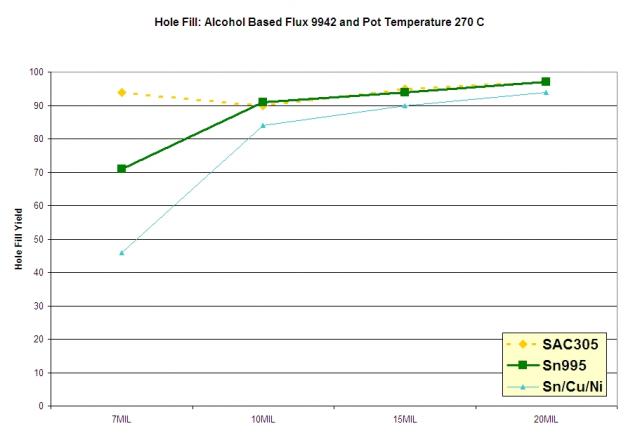Many consumer electronics transitioned to Pb-Free 4-5 years ago. However, there are still a substantial number of electronics being built with Sn/Pb solder. As some of these products begin to transition to Pb-Free, the decision on a bar solder alloy for the wave soldering process is a challenging one. There are two widely recognized options to choose from:
- use SAC305 and keep the alloy the same as the SMT process
- choose a low silver (Ag)/Ag-free alloy which is substantially lower in cost
From a cost perspective the Ag-Free alloys are 40-50% cheaper than SAC305. This is a substantial savings when you consider that solder pots hold around 1,000 lbs of solder. In this arena, Indium offers our Sn995 which is a cobalt doped Sn/Cu alloy. In addition to being lower in cost, Sn995 produces shinier solder joints than SAC305.
It would be great if that were the whole story, but there are cases when SAC305 should still be considered as a bar solder for wave soldering processes. One advantage of SAC305 is that it has a faster wetting speed than any of the Ag-Free alternatives. This can help when you have a board or process that is challenged with poor hole fill. The chart below shows the difference between popular Pb-Free alloys for wave.

Another potential advantage of SAC305 is in thermal cycling reliability. Because the typical wave solder joint is large and very robust, reliability may not be a concern for many consumer products. However, as the reliability requirements increase for industries such as automotive, aerospace, and military, the stronger SAC305 solder joint may be what is needed to meet more stringent reliability requirements.
Both SAC305 and Ag-Free alloys, such as Sn995, have their place within the electronics manufacturing arena, but it is essential that the correct decision is made based on the product being assembled.


